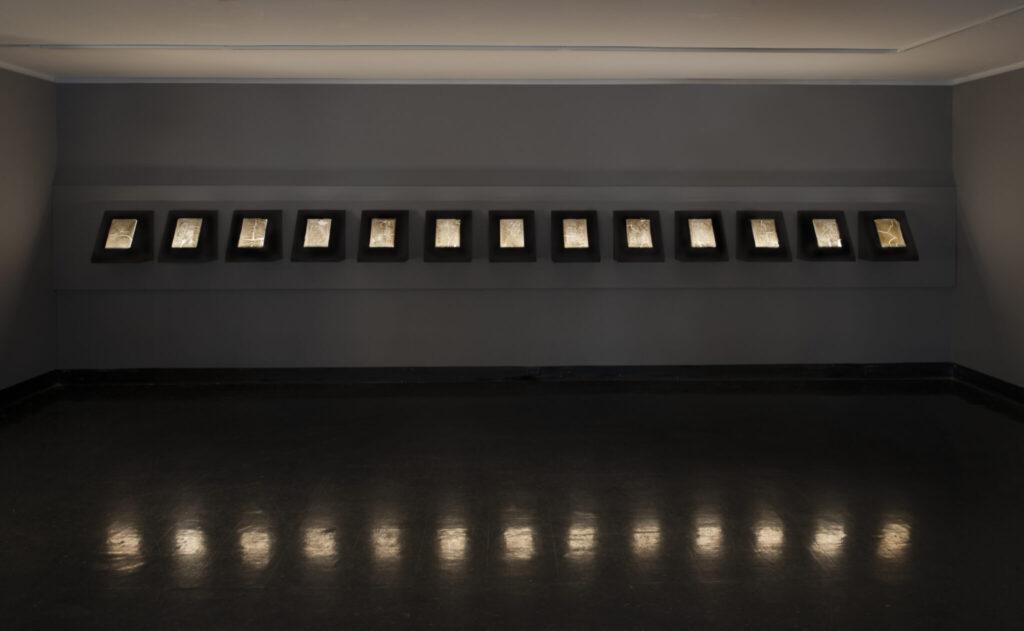Three days a week since I arrived at Georgetown University, I have walked through the doors of the Edmund A. Walsh Building and have ignored the ground-floor Maria & Alberto de la Cruz Art Gallery and Lucille M. and Richard F.X. Spagnuolo Art Gallery.
Their presence quasi-haunted me — they were consistently open and alluring, but I never dared to enter them. I feared that I would be asked about a ticket or be looked down upon by some posh, artisan gallery-goer, and it was not until I received this assignment from The Hoya that I finally gathered the courage to visit.
Both galleries are conveniently located just a short walk from the main gates on the ground floor of Walsh and are open from 10:00 a.m. to 6:00 p.m. on Wednesday through Saturday and from 1:00 p.m. to 5:00 p.m. on Sunday. A visit to either gallery is completely free and open to all, not just Georgetown students or art majors. The exhibit titled “Children of Paradise” in the Spagnuolo Gallery, which can be found just beside the doors to the main stairway in Walsh, opened this semester and explores the genealogy of the artist, Elizabeth M. Webb.
Walking in, I was instantly transported from the routine I am used to when I enter Walsh: instead of brightly lit classrooms reminiscent of my childhood post-service Sunday School, I was immediately immersed in a bespoke, strategically lit space. Light pooled on what appeared at first to be crushed clay tablets inscribed with writing, one lined up next to the other in a long row spanning practically the entire room.
In reality, the broken ceramic tablets depict excerpts from an interview that Webb conducted with her great-aunt Jane. The apparent namesake of the project and Webb’s great-grandmother Paradise was a Black woman known for her exquisite beauty, but also the fact that she did not allow her picture to be taken.
Paradise had 13 children and depicts each of them in the 13 respective tiles. The theme of family is central not only to the meaning behind the artwork but to the materials she used to craft the tablets. According to the gallery’s description of the work, she used porcelain because of its “connotations as a ‘precious’ material that is passed down in families, among generations.”
The partial illegibility of the text on the tablets is one of the most poignant visual effects of the showcase and was a purposeful choice by Webb. According to her website, one of the primary themes of the project is legibility, including “the social legibility of the passing subject, the way we read one another, and our ability to comprehend language.” The text moving in and out of legibility forced me to interact more purposefully and critically with the work, giving me a chance to slow down and really consider Webb’s mission.
Race and the legacy of enslavement in the United States are explored deeply and critically in Webb’s work, reflecting her and her family’s Black lineage. Webb did not know her father came from Black ancestry until she was 18; she has since delved into her family’s past, visiting a former plantation site in eastern Alabama, a site that her family needed to fight to retain and is now Paradise’s property.
Originally from Charlottesville, Va., Webb graduated from the University of Virginia in 2012 and earned a Master of Fine Arts from the California Institute of the Arts in 2016. Since then, she has undertaken numerous projects concerning the legacy of racial divisions and enslavement in the United States, and her work has been showcased in exhibitions across the country and the world.
On March 16, make time for an event featuring Webb in a conversation about race, research and genealogy, as well as a film screening.
Webb’s work will be on display in the Spagnuolo Gallery until May 14, so there is plenty of time to plan a visit of your own. Alternatively, there is a virtual exhibition available on the de la Cruz Gallery and Spagnuolo Gallery’s website.














